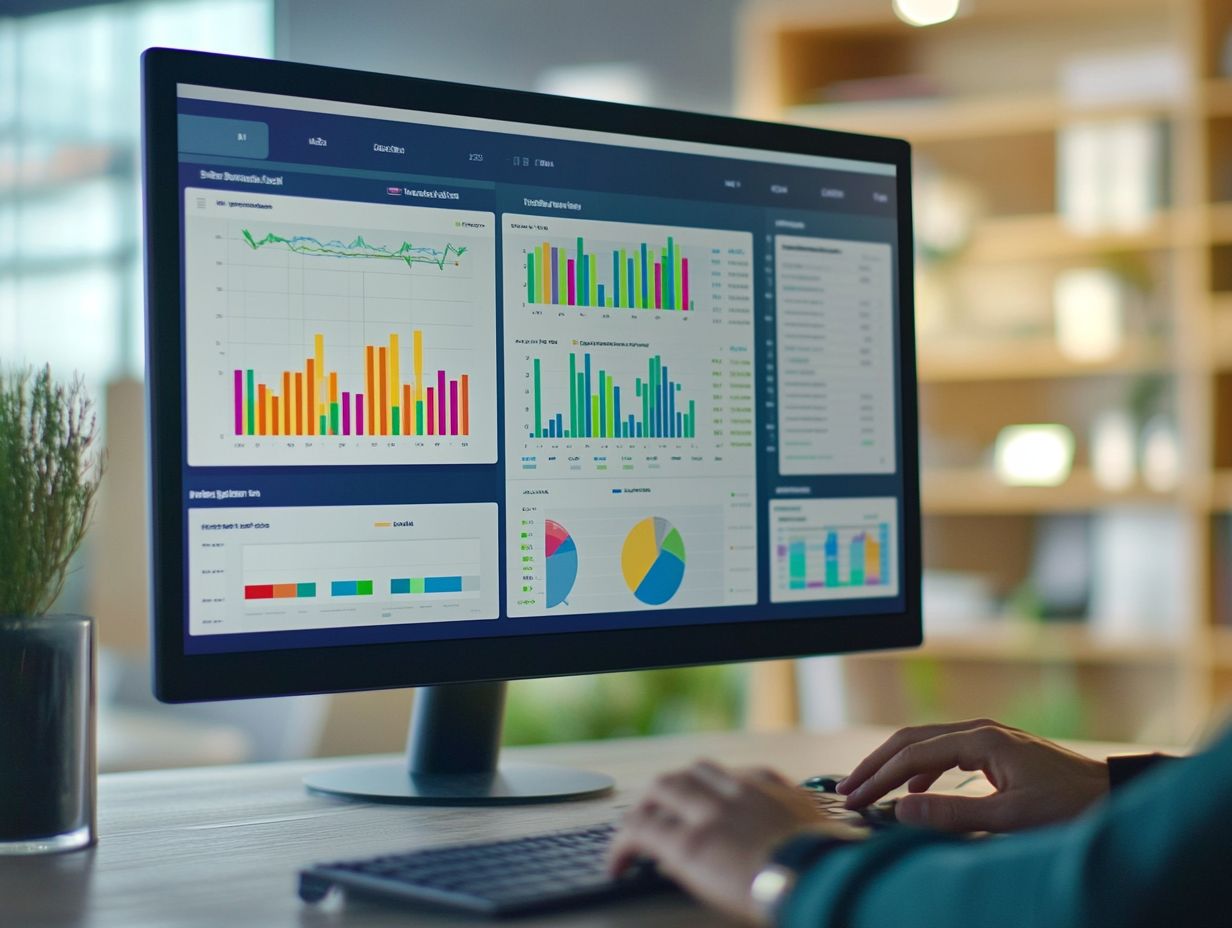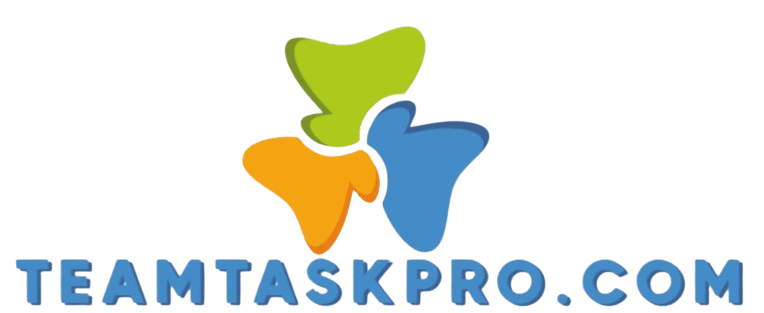key features to look for in reporting tools
In today s data-driven landscape, selecting the right reporting tools is essential for making informed decisions. Whether you run a small business or manage a large enterprise, your reporting solution’s capabilities can greatly impact your efficiency.
This article explores key features that can enhance your reporting experience, such as customizable dashboards, real-time data tracking, advanced filtering options, and mobile access. Discover how these tools can turn your data into actionable insights and boost productivity.
Contents
- Key Takeaways:
- 1. Customizable Dashboard and Reports
- 2. Real-Time Data Tracking
- 3. Multiple Data Sources Integration
- 4. Automated Report Scheduling
- 5. Interactive Data Visualization
- 6. Collaboration and Sharing Capabilities
- 7. Customizable Templates and Themes
- 8. Mobile Access and Responsive Design
- 9. Data Security and Privacy
- 10. Integration with Other Tools and Platforms
- 11. Ability to Handle Large Data Sets
- 12. Advanced Filtering and Segmentation Options
- 13. Historical Data Analysis
- 14. Customer Support and Training Resources
- 15. Cost and Value for Money
- Frequently Asked Questions
- What are the key features to look for in reporting tools?
- Can I customize the dashboard in reporting tools?
- Do reporting tools offer data visualization capabilities?
- Can reports be automatically scheduled and distributed in reporting tools?
- Is real-time data updating possible in reporting tools?
- Can reporting tools be integrated with other software systems?
Key Takeaways:

Customization is key. Look for reporting tools that allow customizable dashboards and reports to fit your specific needs. Real-time data tracking helps you make quick decisions, so prioritize tools with this feature. Ensure your reporting tool can integrate with multiple data sources for a complete view of your data.
1. Customizable Dashboard and Reports
Customizable dashboards and reports are fundamental to business reporting software. They let you create tailored analytics that improve decision-making and efficiency.
These dashboards help you visualize performance metrics and generate financial reports. This ensures stakeholders clearly understand your data management strategies.
In sectors like healthcare, where patient data and compliance are vital, customizable dashboards help monitor key performance indicators and ensure adherence to protocols.
Government agencies can use these tools to visualize resource allocation and community health metrics, aiding informed policy-making.
Real-time data visualization enhances performance tracking and helps you spot trends quickly. Customizable reporting tools improve user experience and ensure compliance, promoting transparency across various sectors.
2. Real-Time Data Tracking
Real-time data tracking elevates operational efficiency. It allows you to monitor key performance metrics and make swift, data-driven decisions.
Use cloud technology and artificial intelligence to quickly access and analyze vast data sets. These innovations create seamless integration and help your teams collaborate effectively.
Precise data analytics reveal trends and risks, enabling proactive measures. These technologies also enhance data accuracy and security, protecting sensitive information.
3. Multiple Data Sources Integration
Integrating multiple data sources is crucial for accurate reporting and analysis. This integration helps you leverage past data to forecast future trends.
By combining various information streams, you gain a unified view of performance metrics, essential for informed decision-making. However, inconsistent data can hinder your analysis.
Many organizations turn to customized reporting tools that automate data cleansing to ensure accuracy. These solutions streamline your workflow and provide real-time insights for better strategic planning.
Act now to harness the power of these tools!
4. Automated Report Scheduling
Automated report scheduling reshapes your reporting process. It delivers timely insights that help you make decisions while meeting industry standards.
By harnessing this feature within financial reporting software, you can significantly boost your operational efficiency. It minimizes the manual effort needed for report generation and provides seamless access to ad hoc reporting capabilities.
This flexibility allows you to quickly retrieve relevant data and adapt to shifting market conditions, supporting your strategic initiatives.
Regular updates through automated schedules cultivate a culture of accountability and transparency. This enables your team to make informed decisions based on the most current information without the usual delays associated with traditional reporting methods.
5. Interactive Data Visualization

Interactive data visualization turns complex data into clear visuals. This makes it easier for stakeholders to understand important metrics.
By leveraging tools like Tableau and Power BI, you can create visually appealing dashboards that present data in an easily understandable manner. These technologies enable you to manipulate data in real-time, allowing targeted analysis and knowledge-based decision-making.
Visual appeal is very important; it plays a vital role in conveying information effectively. This makes it simpler for you to grasp trends and patterns at a glance.
Interactive charts allow for performance tracking and help you drill down into specifics, fostering deeper engagement with the data.
6. Collaboration and Sharing Capabilities
Collaboration and sharing capabilities are essential for nurturing team dynamics. They allow you and your stakeholders to engage in real-time discussions and make informed, data-driven decisions.
Tools like Microsoft Teams and ShareGate enable seamless communication and project management. This helps your teams collaborate efficiently, no matter where they are located.
With their intuitive interfaces and integration capabilities, these platforms support messaging, video calls, file sharing, and collaborative editing.
Team synergy helps gather insights, encouraging innovative solutions and driving organizational growth. By leveraging these tools, you can enhance your strategic planning and execution, leading to improved outcomes and stronger team dynamics.
7. Customizable Templates and Themes
Customizable templates and themes provide you with a user-friendly interface that boosts visual appeal. This enables you to tailor reports and dashboards to reflect your unique brand and business needs.
These tools not only enhance aesthetics but are also essential for presenting complex financial data in a more digestible format. By making information easier to read, customizable templates help you make informed decisions, ultimately enhancing your financial performance.
Their simplicity enhances data literacy, allowing you to understand and interpret key metrics without extensive training. This ease of use elevates engagement and ensures that stakeholders connect with the data, fostering a culture of knowledge-based decision-making.
8. Mobile Access and Responsive Design
Mobile access and responsive design are critical features in today’s business reporting software. They allow you to securely access critical data from any device while ensuring an optimal user experience.
These features supercharge your efficiency! They promote scalability by enabling seamless integration with various platforms.
As your organization grows and evolves, the ability to tailor reporting tools to meet users’ needs becomes increasingly vital. Responsive design plays a pivotal role in protecting your data, adjusting interfaces to fit different device specifications and improving usability.
By facilitating real-time insights, mobile access enables you to react swiftly to changing conditions. This ultimately drives productivity and fosters a culture of knowledge-based decision-making within your enterprise.
9. Data Security and Privacy
Data security and privacy are critical in your business reporting. You must adhere to compliance standards and regulatory requirements to maintain the trust of your stakeholders.
In today s digital landscape, focusing solely on compliance is not enough. You must adopt best practices that protect sensitive information from potential threats.
Using cloud-based solutions can significantly bolster your data security. Reputable providers typically offer robust security measures, including regular updates and advanced threat detection.
Encrypting data throughout its lifecycle is essential. This way, even if unauthorized access occurs, your information remains safeguarded.
The consequences of data breaches are severe. They can lead to financial loss, reputational damage, and legal repercussions.
By fostering a culture of data literacy within your teams, you promote understanding and vigilance in data handling practices. This enables employees to recognize vulnerabilities and prioritize security protocols.
10. Integration with Other Tools and Platforms

Integrating with other tools and platforms enhances your business reporting software’s capabilities. This allows for seamless data management and expanded reporting functionalities!
Incorporating popular tools like BusinessObjects and Visme helps you take full advantage of customized reporting features tailored to your specific needs.
These integrations enable your teams to visualize data more effectively. This ensures that critical insights are not just accessible but also actionable.
Using emerging technologies through these platforms facilitates smarter decision-making processes. You can quickly analyze trends and monitor performance metrics.
This synergy streamlines workflows and fosters a culture of data-driven strategies. Ultimately, it elevates overall productivity and innovation within your organization.
11. Ability to Handle Large Data Sets
The ability to manage large data sets is essential for your organization. This is critical to maintaining data quality and enhancing performance tracking in your reporting processes.
Scalable solutions are key in this landscape. They enable your business to swiftly and efficiently analyze vast amounts of information.
By integrating advanced technologies such as cloud computing, machine learning, and big data analytics, you can automate data processing. This unlocks real-time insights and minimizes the chances of errors.
Implementing strategies like data warehousing storing large amounts of data in a central location for easier access and analysis and virtualization enables you to allocate resources more effectively.
These tools help you drive data-driven decision-making, improving operational performance and giving you a competitive advantage in the market!
12. Advanced Filtering and Segmentation Options
Advanced filtering and segmentation options let you extract precise data and generate customized analytics. This delivers invaluable insights for your decision-making process.
This capability is essential because it directly impacts the quality and relevance of your reports. It ensures that stakeholders receive information tailored to their specific needs.
For example, in the healthcare sector, employing filters can help you:
- Identify patient demographics.
- Analyze treatment outcomes.
- Recognize outbreak patterns.
In finance, segmentation allows you to conduct thorough analyses of customer behavior, assess risks, and track market trends. By leveraging these tools, you can enhance your strategies, optimize your resources, and ultimately drive superior results!
13. Historical Data Analysis
You must analyze historical data to grasp trends and plan strategically for growth. By examining past behaviors and outcomes, you can uncover patterns that highlight both opportunities and potential pitfalls.
This thoughtful evaluation fosters not only a reactive mindset but also a proactive strategy that aligns with your future objectives.
As you dive deeper into this analysis, consider integrating emerging technologies. Tools like artificial intelligence and predictive analytics can significantly elevate your ability to extract insights from extensive datasets.
These technologies streamline the analysis process, helping you discover nuances that might slip past human scrutiny. With the right tools, you’ll uncover insights that could redefine your strategy. This is your path to making informed, data-driven decisions!
14. Customer Support and Training Resources
Comprehensive customer support and training resources are vital for enhancing your user experience and fostering data literacy. They ensure you implement business reporting software effectively.
These resources equip your team with the skills needed to navigate complex features. They also help cultivate a culture of collaboration through shared knowledge.
By leveraging various support channels like live webinars, interactive tutorials, and dedicated help desks you’ll quickly discover the answers you need and troubleshoot issues as they arise.
This multi-faceted approach allows your team to maximize the software’s reporting capabilities, transforming raw data into actionable insights.
As a result, user adoption rates soar, leaving individuals feeling more confident and enabled to leverage the tools for knowledge-based decision-making within the organization.
15. Cost and Value for Money

Evaluating the cost and value of business reporting software is crucial for your organization as you seek to maximize your investment while maintaining compliance with industry standards.
A thorough examination of various pricing models will reveal how they align with features like the ability to grow with your needs and advanced reporting capabilities.
You need to consider whether a subscription model provides the flexibility for growth you seek, or if a one-time purchase fits better within your budget constraints.
By understanding the relationship between cost and functionality, you can identify tools that not only fit your financial plans but also enhance your ability to make informed, data-driven decisions.
The right software can empower you to extract insights efficiently, ensuring that every dollar spent translates into actionable intelligence.
Frequently Asked Questions
What are the key features to look for in reporting tools?
The key features to look for in reporting tools include customizable dashboards, data visualization capabilities, automated scheduling and distribution of reports, real-time data updates, and integration with other software systems.
Can I customize the dashboard in reporting tools?
Yes, most reporting tools offer customizable dashboards where users can choose and arrange relevant data and metrics to be displayed.
Do reporting tools offer data visualization capabilities?
Yes, many reporting tools come with data visualization capabilities that allow users to create charts, graphs, and other visual representations of data to easily identify trends and patterns.
Can reports be automatically scheduled and distributed in reporting tools?
Yes, this is a key feature of reporting tools that saves time and effort by automating the process of creating and sending reports on a regular schedule.
Is real-time data updating possible in reporting tools?
Yes, some reporting tools offer real-time data updating, which means that the data displayed on the dashboard or in reports is always up-to-date.
Can reporting tools be integrated with other software systems?
Yes, many reporting tools offer integration capabilities with other software systems, allowing for seamless data transfer and analysis from multiple sources.






